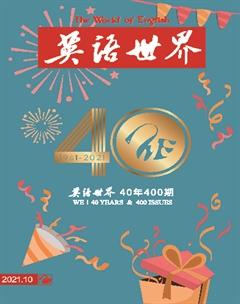9 Inventions That Changed How We Communicate改变人们交流方式的九项发明
郝保伟
Human illustration
The capacity of human beings to create images allows us to convey thoughts and experiences in an efficient and elegant manner. The earliest known instances of such expression are found in 40,000 year old cave paintings from Spain and France.
Paper
Paper, the thin material produced by pressing together moist fibers and then pressing them together into sheets, is significant for an obvious reason. With a writing system one needs a platform to write on. Before there were clay tablets, stone, and papyrus1, but such things were cumbersome and economically unviable to mass produce. Therefore, paper served a huge function which would later be amplified with the printing press. It democratized2 and further diffused the reaches of human communication.
The printing press
The printing press is a device used for uniformly pressing ink onto a printable medium (usually paper). The invention of the printing press in Europe by Gutenberg displaced earlier, more expensive methods of printing and led to the first assembly line method of manufacturing books. The printing press, because it was such an economically viable means of printing communication, led to the vast proliferation3 of written communication.
The electrical telegraph
The telegraph is a piece of technology which uses electronic signals to relay coded messages over long distances without the physical exchange of the object bearing the message. The telegraph is so consequential to communication because it radically reduces the amount of time needed to relay a message. For example, after the transatlantic telegraph cable was laid, a message could be sent from America to Europe within a matter of seconds as opposed to a week.
The telephone
The telephone, perhaps the most conspicuous4 communicative device in our lives, is the piece of telecommunication technology which allows two or more users to hold a verbal conversation even though they are not in the same area. First developed by Alexander Graham Bell in 1876, the telephone was the first piece of technology that allowed people to speak with each other over vast distances.
The radio
The radio specifically works through the radiation of electromagnetic signals through the atmosphere. Information, in this instance sound, is carried by changing or modulating5 the property of the electromagnetic waves. The radio did more than just inform and entertain the majority of the worlds population in the early twentieth century. It also was the earliest, and until television, the most conspicuous demonstration of electronic mass medias propensity6 to diffuse ideas and homogenize7 culture.
The computer
A computer is a device that can be programed to carry out a variety of operations automatically. A computer at least consists of a central processing unit, which carries out arithmetic or logical operation, and a form of memory to store the operations. Computers are so ubiquitous8 in our lives we sometimes forget the key promise of computing. Computers are not a tool which are meant to supplant human ingenuity9. Rather they are here to augment human capabilities and allow us to further expand our horizons.
The internet
The internet is the global system of interconnected computer networks that link billions of devices worldwide. Although a young technology, this system of interconnectedness has permeated virtually every aspect of our lives. The internet is also significant because, as perhaps the largest information technology breakthrough in human history, it has allowed for entirely new methods for social interaction, activities, and organization.
Social media
Social media, can generally be understood as a virtual network or community through which people create, share, and exchange information and ideas. Social media, though a recent phenomenon, is a breakthrough which differs from all kinds of previous media because of the increased reach, usability, immediacy, and interconnectedness of consumers. In many ways, social media is a culmination10 of all the kinds of previous inventions in human communications. That is to say, not only does social media use the power of computing and the reach of the internet, but also it uses time-old breakthroughs such as written symbolic and visual representation of stories and ideas.
圖绘
得益于绘制图像的能力,人类能够以简明高效的方式传递想法和传授经验。目前已知最早使用这种方式的案例来源于西班牙和法国,在那里发现了具有四万年历史的洞穴壁画。
纸
将湿润的纤维压到一起,再将其压制成薄片,即造出了纸这一轻薄的材料。纸的重要性显而易见。在书写体系中,可供书写的载体不可或缺。以前作为载体的有泥板、石头、莎草纸,然而它们携带不便,并且制造成本高,不适宜大规模生产。因而,纸便发挥了巨大的作用,后来的印刷机使其作用更加凸显。人类交流得以大众化,并且其范围也进一步扩大。
印刷机
印刷机是一种将油墨均匀地印在可印介质(通常是纸)上的设备。在欧洲,古腾堡发明的印刷机取代了先前更加昂贵的印刷方式,首次实现流水线生产书籍。由于具备经济上的可行性,印刷机这一印刷传播手段促进了书面交流的极大发展。
电报
电报是一种利用电信号对加密信息进行远距离传输的技术,无需对信息载体进行实物交换。电报对人类交流具有深远的影响,因为它极大缩短了传播信息所需的时间。例如,跨大西洋海底电缆铺设完成后,一条信息在几秒内即可从美国到达欧洲,而不再耗时一周。
电话
电话或许是生活中最出色的交流工具,它是一种电信技术。通过电话,即使身处异地,两个或以上的人也能进行口头交谈。亚历山大·格雷厄姆·贝尔在1876年发明了电话,这一技术首次实现了人们的远距离对话。
无线广播
确切来说,无线广播通过电磁信号在大气中的辐射而运行。通过改变(或者说调制)电磁波的属性实现信息(此处指声音)的传递。无线广播不仅在20世纪初为全球大部分人口提供了资讯和娱乐,而且还最早且最为显著地(电视出现前)体现出电子大众传媒传播思想和使文化同质化的倾向。
计算机
计算机是一种通过编程可自动执行各种运算的机器。计算机至少包括一个中央处理器和一种存储器,前者执行算术或逻辑运算,后者保存运算数据。计算机在生活中随处可见,我们有时会忘记它的核心使命。计算机并非意在取代人类智慧,它只是帮助我们提高自身能力、进一步拓展视野的工具。
互联网
互联网是由相互连接的电脑网络形成的全球系统,这些网络连接了世界范围内的数十亿台电子设备。互联网虽是新生科技,但事实上,这种互联系统几乎已经渗入到生活的方方面面。互联网可能是人类历史上最重大的信息技术突破,它之所以重要,还因为它为社会交流、活动和组织工作提供了全新的方式。
社交媒体
社交媒体通常可以理解为一种虚拟的关系网或社区,用户可借以创建、分享、交流信息和想法。尽管是一股新热潮,但因其影响范围更广,可用性、即时性和用户间关联性更强,所以社交媒体是一种不同于以往各个媒介的新突破。在很多方面,社交媒体可谓人类在交流方面过往所做发明之集大成者。也就是说,社交媒体不仅借助了计算机的运算能力和互联网的覆盖能力,还利用了先时的创举,比如用书面文字及图像来展现故事和想法。
(译者为“《英语世界》杯”翻译大赛获奖者)

